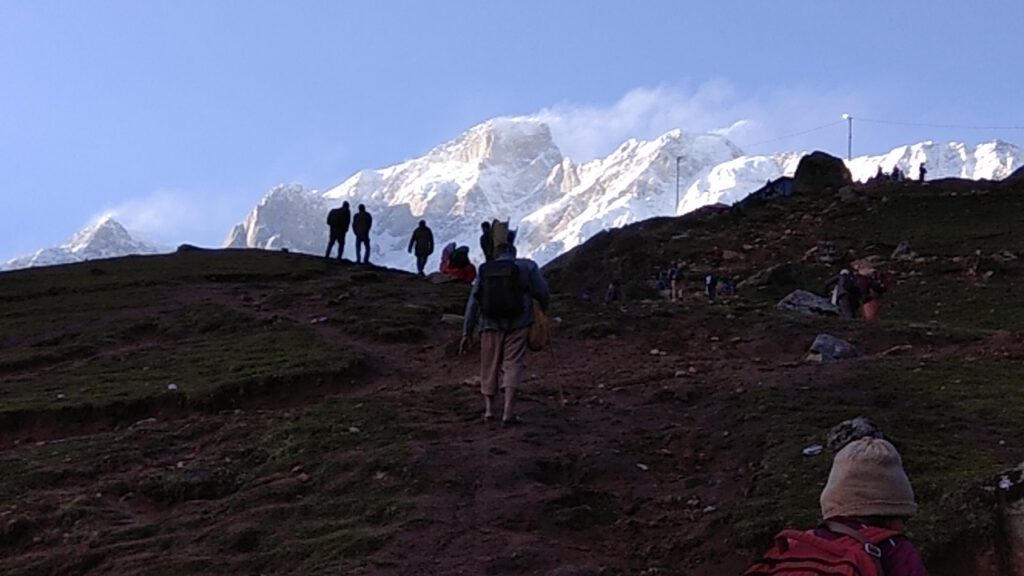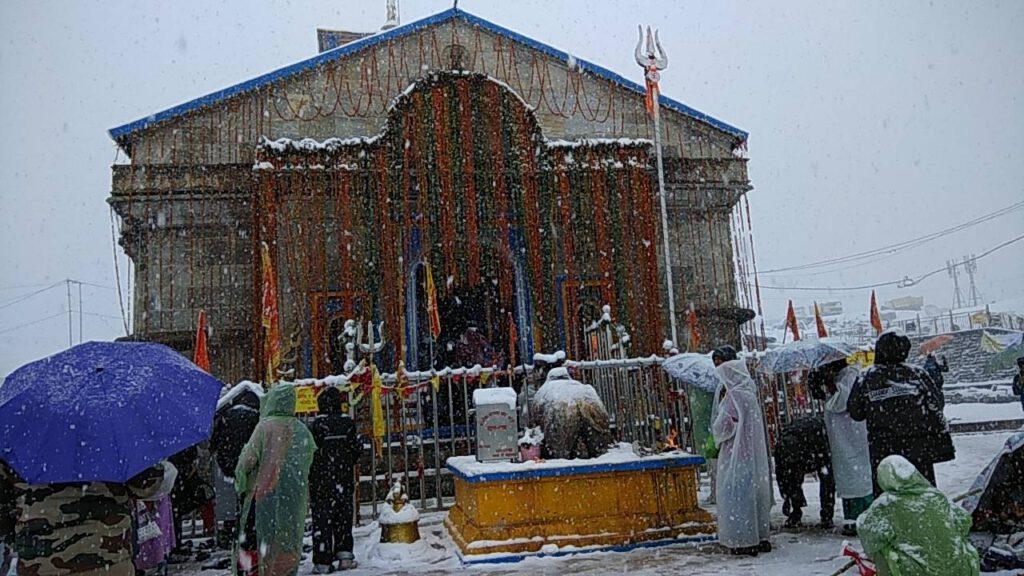Kedarnath Temple- One of the most revered and historic Hindu temples dedicated to Lord Shiva is Kedarnath Temple, which is located in Uttarakhand, India’s majestic Garhwal Himalayan region. This hallowed shrine is a masterpiece of historical and architectural legacy in addition to being a major religious attraction. Near the Mandakini River’s head, at a height of 3,583 meters (11,755 feet) above sea level, sits the temple of Kedarnath. Its serene and beautiful setting in Uttarakhand’s Rudraprayag area adds to its allure on a spiritual and mystical level. The shrine is encircled by tranquil surroundings, verdant meadows, and snow-capped hills.
Architectural Style
One of the best examples of Himalayan architecture in North India is the Kedarnath Temple. The temple’s design is straightforward and sturdy, able to survive the severe weather in the area. It is made of large stone slabs. The temple has a sanctum sanctorum that houses the main deity in the shape of a naturally occurring rock formation, as well as a conical stone tower called a “Shikhara.”
Religious and Mythological Significance- One of the twelve Jyotirlingas, or most sacred Shiva temples, is Kedarnath. Legend has it that Lord Shiva pretended to be a bull in order to escape the Pandavas, and when they discovered who he was, he dove into the earth. While other sections of his body, known as Panch Kedar, emerged at other locales, his hump first appeared in Kedarnath. The significance of the temple is elevated to a profoundly spiritual level by this account.

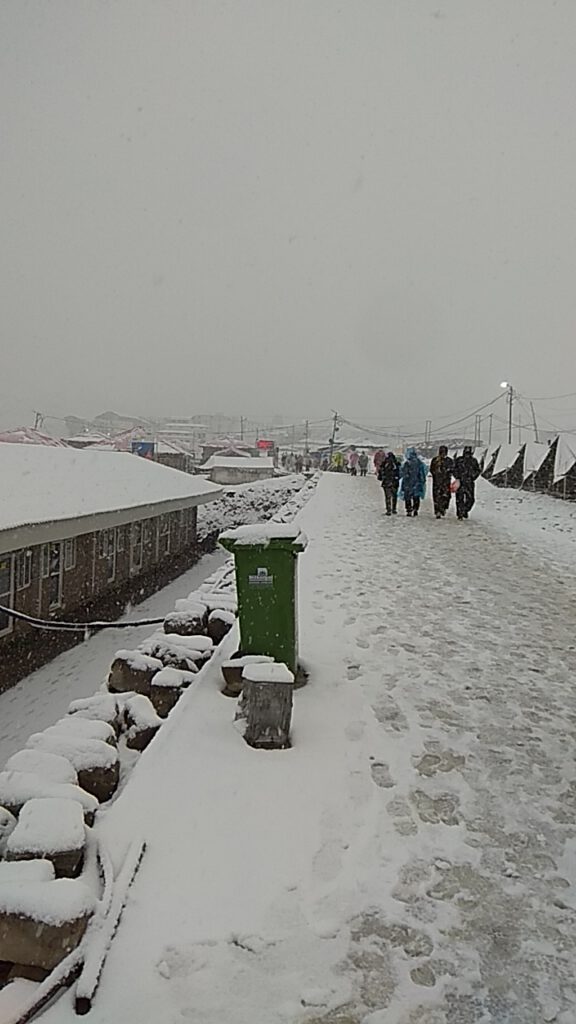
2013 Flood Disaster
A disastrous flash flood and landslide that ravaged Kedarnath in June 2013 occurred. The temple itself was remarkably spared harm and still stands as a testament to fortitude and divine protection. The tragedy brought attention to the spiritual value of the temple as well as the need for better safety protocols.
Modern Developments- The infrastructure surrounding Kedarnath has undergone significant reconstruction operations aimed at improving and restoring it after 2013. Pilgrims now have easier access thanks to helicopter services and a protected walk route from Gaurikund to the temple. The aims of these developments are to maintain the temple’s holiness and legacy while guaranteeing safety.
Celebrations & Occasions- Large numbers of devotees gather at Kedarnath to celebrate major festivals like Maha Shivaratri and Diwali with great passion. The temple’s lively spiritual environment is enhanced by the daily special rites and ceremonies, which are held with increased fervor throughout these festivals.
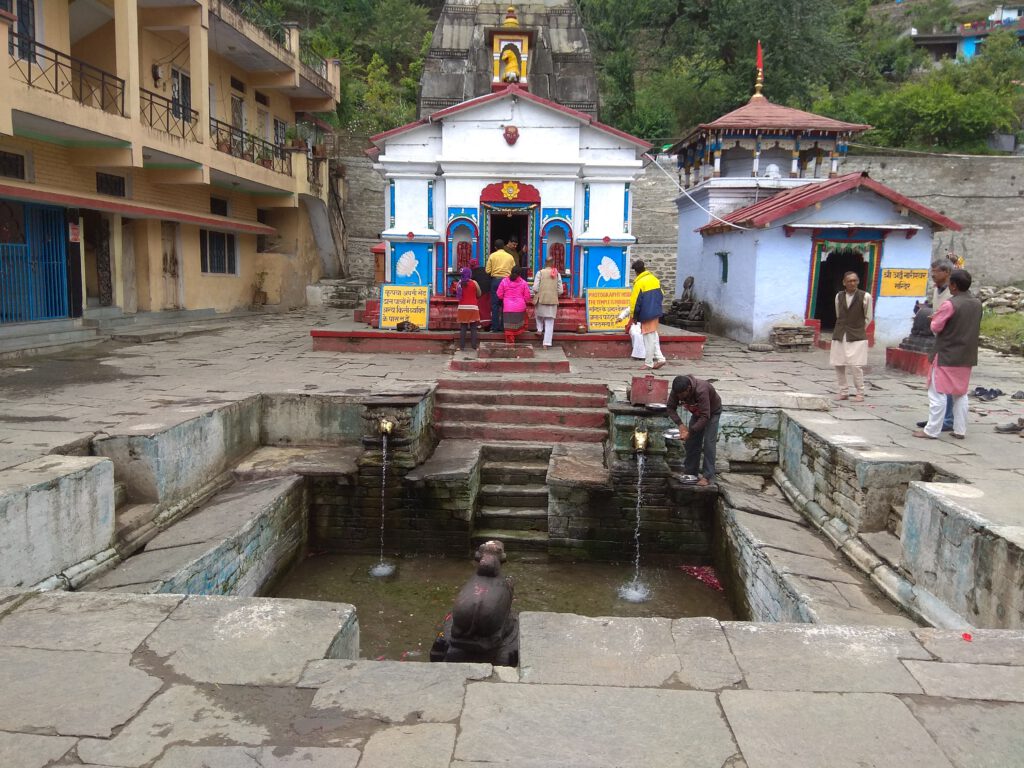
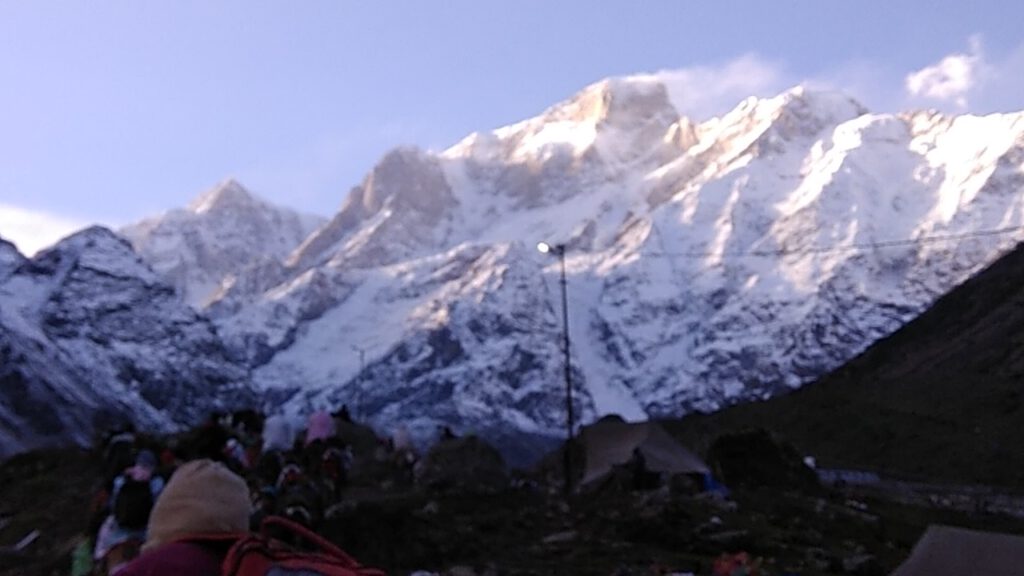
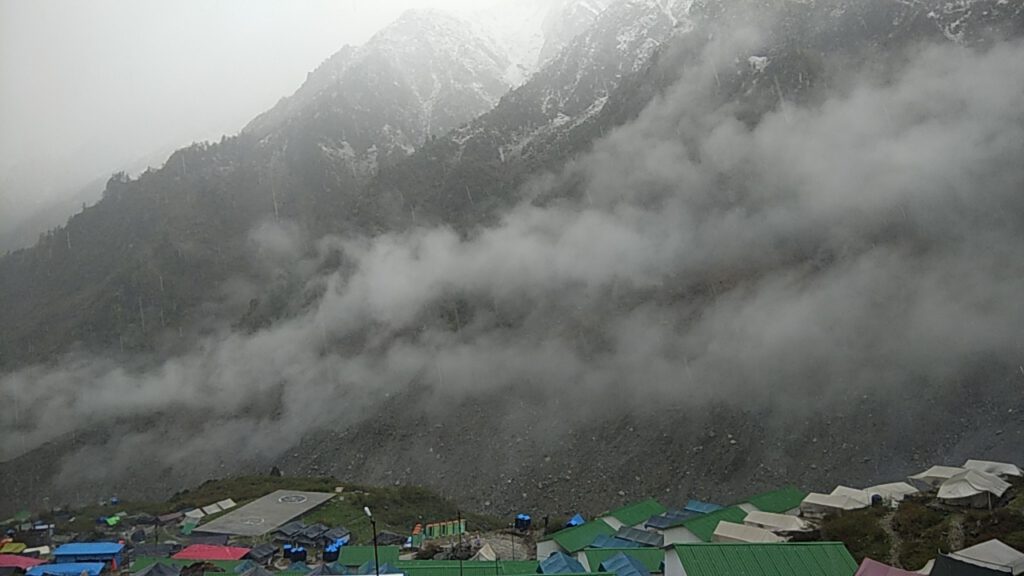
Every Year’s Journey- The Kedarnath Temple is open to pilgrims from November (Kartik Purnima) to the end of April (Akshaya Tritiya) because of harsh winter weather. During the winter, the deity is relocated to Ukhimath for worship, and the temple closes. Many thousands of devotees make the pilgrimage every year, demonstrating their strong faith and devotion despite the difficult travel.
Hot Beverages☕😋
Herbal Tea: Made from local plants, herbal tea is a popular beverage during the colder months. It keeps the body warm and aids in acclimatization to the high altitude.
Kahwa: A traditional tea from Kashmir brewed with green tea leaves, cardamom, cinnamon, saffron, and sometimes walnuts or almonds. It smells good and is warming.
Regional Specialty 🍜🥘🧆
Kichadi: A straightforward and wholesome dish consisting of rice and lentils that is frequently flavored with ghee and mild spices. It gives pilgrims the vital energy they need and is simple to stomach.
Aloo Puri: Popular North Indian meal Aloo Puri is a spicy stew of potatoes served with puri, or deep-fried bread. Many guests appreciate this hearty dinner.
Maggie Noodles: Because of the pilgrims’ isolated location and difficult weather, quick noodles have grown to be a well-liked and practical meal option.
